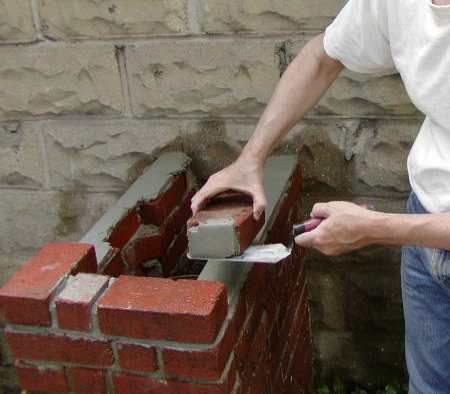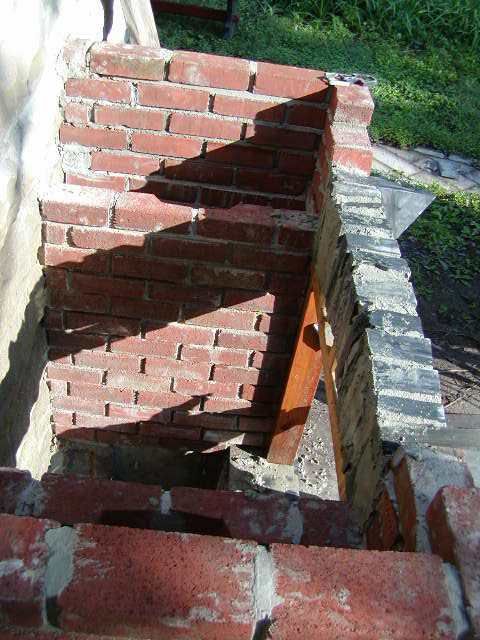New triangle plan
I had previously mentioned that I had come up with a new way of making a triangle with one brick, and two cuts. Since my triangle count had come up three short, it gave me a chance to try out my new theory.

Here's the new triangles, and for future refrence, a look at the piece cut off the bottom: See how big it is? You could make a considerablely larger oven with the same number of bricks.
Here's the door-side partial hexagons assembled, to compare the look of the vertically and horizontally seamed polygons.

The vertical seam leaves the point shreaded, but it's all concealed in mortar anyway.
Also there is a little cut-off nub that needs to be cleaned up while you are cutting the bottom, no problem.
I had previously mentioned that I had come up with a new way of making a triangle with one brick, and two cuts. Since my triangle count had come up three short, it gave me a chance to try out my new theory.

Here's the new triangles, and for future refrence, a look at the piece cut off the bottom: See how big it is? You could make a considerablely larger oven with the same number of bricks.
Here's the door-side partial hexagons assembled, to compare the look of the vertically and horizontally seamed polygons.

The vertical seam leaves the point shreaded, but it's all concealed in mortar anyway.
Also there is a little cut-off nub that needs to be cleaned up while you are cutting the bottom, no problem.




























Comment